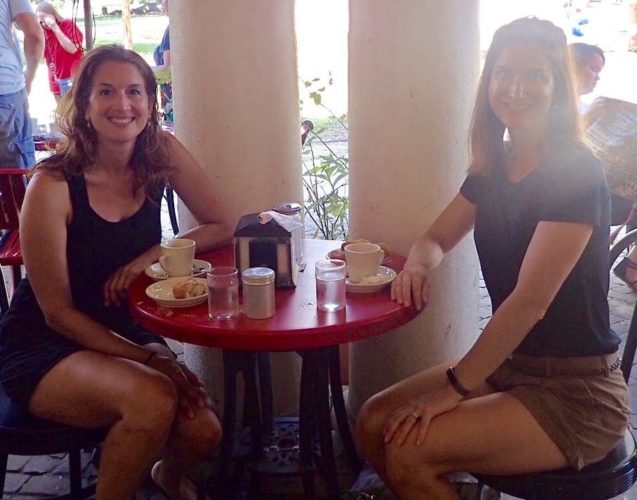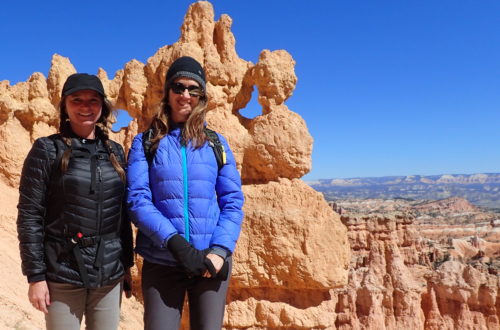
Austin and NOLA
Austin is the fastest growing large city in the United States. The local motto is “Keep Austin Weird” and it is featured on bumper stickers and T-shirts. Austin uses this motto to celebrate its eccentricity and diversity but also to bolster support of local independent businesses. It remains an important symbol for many Austinites who wish to voice concern over rapid growth and irresponsible development. Austin is known as an enclave of liberal politics in an otherwise conservative state, blue in a sea of red. Austin is the most bike-friendly city in Texas and was ranked the seventh city in the United States by Bicycling Magazine in 2016.
Kelly #2 flies into Austin and meets us outside as we pull up to the Airbnb house. Kelly lives in Frederick, MD, where we met. Kelly was a kindred-spirit patient of mine and we became fast friends. She is married with one child. As a psychologist, Kelly is the most thoughtful and fully present friend I have. She listens with her whole body and gives you sound advice, always giving the benefit of the doubt. When I told Kelly of my plans, she was excited to join for a few days.
Our first stop is Whole Foods, for the first of many visits. As the flagship store, it didn’t disappoint. It combined restaurants, a prepared food bar, wine and beer selections, and abundant fresh produce. We shop for now and later. We eat the “now” selections in the loft eating area. My favorite part is the mochi ice cream cooler. So. Much. Deliciousness.
Whole Foods is one of the most notable businesses in Austin. In 1978, 25-year-old college dropout John Mackey and 21-year-old Renee Lawson (Hardy), borrowed $45,000 from family and friends to open the doors of a small natural foods store called SaferWay. Two years later, John and Renee partnered with Craig Weller and Mark Skiles to merge SaferWay with their Clarksville Natural Grocery, resulting in the opening of the original Whole Foods Market. At 10,500 square feet and a staff of 19, the store is large in comparison to the standard health food store of the time. Soon, they expand to Houston, Dallas, New Orleans and then the west coast. In 2001, Whole Foods moves into Manhattan, generating a good deal of interest from the media and financial industries. In August of 2017, Amazon buys Whole Foods for $13.7 billion, cementing its success.
The next morning, we follow a hiking trail along Barton Creek which culminates at Barton Springs. We chill at the natural pools for the day, listening to the concert in the adjacent Zilker Park. Where bathing suit bottoms are required, but tops are optional, Barton Springs Pool is a free-spirited recreational outdoor swimming pool in downtown. It is filled entirely with water from the Main Barton Spring, the fourth largest spring in Texas. The pool is a popular venue for year-round swimming, as its water temperature always hovers around 68 °F. Long before Barton Springs Pool was built, the Tonkawa Native American tribe, who inhabited the area, considered the springs sacred. They were used for purification rituals. We certainly feel rejuvenated as we drive back to the house.
Here we come, New Orleans! Our drive to NOLA is uneventful, EXCEPT for crossing the longest bridge in the world!! For 28 miles, the Lake Pontchartrain Causeway allows us to say over and over, “I can’t believe how long this bridge is.” And “My goodness, this bridge is forever.” And finally, “I have to pee, when will we be off this bridge?”
In 2005, NOLA was catastrophically affected by Hurricane Katrina. Before the hurricane hit, the city called for the first mandatory evacuation in its history. As the hurricane passed over the Gulf Coast region, the city’s federal flood protection system failed, resulting in the worst civil engineering disaster in American history. 80% of the city flooded. Tens of thousands of residents were rescued or made it by their own accord to shelters at the Louisiana Superdome or the New Orleans Convention Center. The recorded death toll was more than 1,500 people.
Because of the scale of damage, many people resettled permanently anywhere but New Orleans. In July 2006, the Census Bureau estimated the NOLA population to be approximately 56% of the pre-Katrina population level. On the up side, 2010 estimates show that neighborhoods that didn’t flood are back to 100% of their pre-Katrina populations.
Our experience in New Orleans involves a city-wide tour on a lovely soothing and air-conditioned tour bus, with a stop at the creepily beautiful above-ground cemetery. We savor a taste of beignet in a classic cafe named Morning Call. (Beignets are sweet treats dubbed as the official state doughnut of Louisiana and are hole-less, rectangular, deep-fried, pillowy, light, and dusted with powdered sugar) We stay in a gorgeous Airbnb, with high ceilings, floor-to-ceiling windows and brick walls. Our dinners involve Creole Pot Pies, delicious fish, and fresh sushi. We spend an afternoon exploring the famous Bourbon and Frenchman Streets. We stop at a jazz club named Bamboulas to enjoy Jan Marie and the Mean Reds. The five piece band describes themselves as “jazz, swing, and everything in between” and Jan Marie’s “black coffee voice” making “a uniquely gritty yet saccharine tincture.” We soak in their vibe.
After some full days exploring two iconic cities, Abby and I deposit Kelly #2 at the NOLA airport. We are sad our trip is over, but we are going to see each other for our usual Frederick walk as I pass through Maryland in five days. With a melancholy hug, a departing wave, and a “see you soon”, we go our separate ways. Abby pouts all the way to Memphis.


You May Also Like

The Best of Colorado, Utah and Arizona
January 16, 2018
Abby
January 8, 2018
